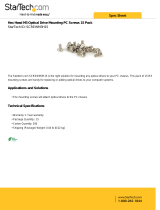
Table of contents
1 Product features ........................................................................................................................................... 1
Standard conguration features ........................................................................................................................... 1
Front panel components ....................................................................................................................................... 2
Rear panel components ......................................................................................................................................... 3
Serial number location .......................................................................................................................................... 4
2 Hardware upgrades ....................................................................................................................................... 5
Serviceability features ........................................................................................................................................... 5
Warnings and cautions .......................................................................................................................................... 5
Removing the computer access panel ................................................................................................................... 6
Replacing the computer access panel ................................................................................................................... 7
Removing the front bezel ...................................................................................................................................... 8
Removing a slim optical drive bezel blank ............................................................................................................ 9
Replacing the front bezel .................................................................................................................................... 10
Cleaning the optional dust lter .......................................................................................................................... 10
Changing from desktop to tower conguration .................................................................................................. 13
System board connections .................................................................................................................................. 14
Installing additional memory .............................................................................................................................. 15
DIMMs ................................................................................................................................................ 15
DDR4-SDRAM DIMMs ......................................................................................................................... 15
Populating DIMM sockets .................................................................................................................. 15
Installing DIMMs ................................................................................................................................ 16
Removing or installing an expansion card .......................................................................................................... 18
Drive positions ..................................................................................................................................................... 22
Removing and installing drives ........................................................................................................................... 23
Removing a 9.5 mm slim optical drive .............................................................................................. 24
Installing a 9.5 mm slim optical drive ............................................................................................... 25
Removing and replacing a primary 3.5-inch hard drive ................................................................... 27
Removing a secondary 3.5-inch hard drive ...................................................................................... 30
Installing a secondary 3.5-inch hard drive ....................................................................................... 32
Removing a 2.5-inch hard drive ........................................................................................................ 35
Installing a 2.5-inch hard drive ......................................................................................................... 37
Installing a security lock ...................................................................................................................................... 40
Cable lock ........................................................................................................................................... 40
Padlock .............................................................................................................................................. 40
HP Business PC Security Lock V2 ...................................................................................................... 41
v




















